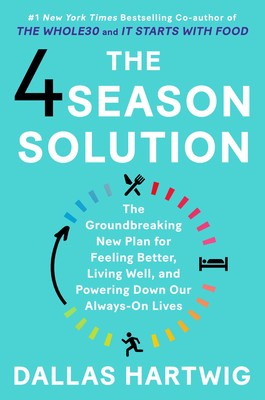This week, we’re talking, once again, about trauma — this time with internationally renowned trauma expert Dr. James Gordon.
A couple of episodes back, in “Trauma with Resmaa Menakem”, Pilar talked with another trauma expert about how familial, ancestral and racialized traumas take hold in us from generation to generation, and what it takes to process and release those traumas in conscious ways.
Here, Pilar talks with Dr. Gordon about his new book, The Transformation: Discovering Wholeness and Healing After Trauma (see linked resources below), about how we tend to get stuck in traumatic experiences of all sorts — and how we can get ourselves out.
Dr. Gordon is a Harvard-educated psychiatrist, the founder of the Center for Mind-Body Medicine, and a clinical professor at Georgetown Medical School. Here, he explains the importance of healing trauma’s psychological and biological wounds — and how we can do that in ways that leave us stronger and more resilient, rather than broken and bereft.
We talk about the strategies he’s seen work in war-torn countries, in violence-ravaged homes, and in addressing the more common sorts of traumatic experiences virtually all of us encounter in our daily lives.
We leave you with experiments to help you better manage your own moments of stress and trauma, including the ones you might not even realize you are still carrying around.
“Trauma with Dr. James Gordon” Episode Highlights
- Dr. Gordon’s background in trauma healing at the Center for Mind-Body Medicine, which he founded almost 30 years ago
- His body of work, including his latest book, The Transformation: Discovering Wholeness and Healing After Trauma
- Pilar’s observation that trauma-awareness is currently having a long-overdue “moment,” and a discussion of why we’re now reawakening to the damage being done to us and by us
- The reality that everyone experiences trauma of some kind during their lifetime — loss, injury, illness, poverty, abuse, neglect, shame — and we all need to understand how humans naturally respond to it
- The importance of dealing with old traumas before they accumulate and precipitate new ones
- Antidotes to trauma-induced stress: Understanding that you will be visited by trauma eventually; knowing that it is possible to recover and become more resilient; finding ways to quiet the agitation and resolve anxiety after a traumatic event
- Physiological reactions created during “fight or flight” and the “freeze response,” and strategies for completion, calming, and release
- How to identify unresolved traumas that want (or need) to be addressed
- Why processing trauma creatively and somatically, rather than just intellectually, may be more helpful and expedient
- The 80% success rate of Gordon’s “Transformation” approach as described in the book, and its applicability to everyone
- The universal capacity of humans to heal themselves when provided with the right tools
Dr. Gordon’s Experiment of the Week
Try this soft-belly breathing exercise. (Soft-belly breathing is a foundational trauma-healing technique that helps 80% of people who try it.)
Find a comfortable resting position and close your eyes. Breathe slowly and deeply, in through your nose and out through your mouth, with your belly soft and relaxed. Say to yourself “soft” as you inhale and “belly” as you exhale. Feel a little more relaxation with each exhalation, knowing that as you do this more air is getting to the bottom of your lungs and feeding all the cells in your body with oxygen.
As you calm and quiet your body, you’ll also be calming your brain. You’ll be activating the vagus nerve, which is the antidote to the “fight or flight” response. Feel your heart rate slow and your blood pressure go down. Feel all your muscles release a little more with each breath. If thoughts come let them, then let them go, bringing your mind gently back to “soft belly.”
If you don’t have luck with this exercise the first time, try again. If you’re too antsy to relax, get up and move around to release the tension and then try again. If you’re not comfortable sitting, try lying down.
Pilar’s Experiment of the Week
Read Dr. Gordon’s book, The Transformation: Discovering Wholeness and Healing After Trauma.
Bonus points: Listen to the “Trauma 1” episode of The Living Experiment to gather more wisdom on cultural, ancestral, and racialized trauma.
Resources
- Dr. Gordon’s latest book, The Transformation: Discovering Wholeness and Healing After Trauma
- The Center for Mind-Body Medicine’s website
- Audio and video of some of Dr. Gordon’ self-care tips
- The “Trauma 1” episode of The Living Experiment with Resmaa Menakem
- An article on the lifelong impact of Adverse Childhood Events (ACEs) and another on using movement therapy to heal trauma, both from Experience Life magazine
Order Our Books!
You’ve heard us talking about them for years now. Wouldn’t you like to among the very first to read them? Both are on shelves now!

ORDER FROM AN INDEPENDENT BOOKSELLER
ORDER FROM AMAZON

ORDER FROM AN INDEPENDENT BOOKSELLER
ORDER FROM AMAZON
Plus …
Sign up for The Living Experiment newsletter so you can stay up to date with us, and receive notifications when new episodes are released.
Subscribe to The Living Experiment on Apple Podcasts to have fresh episodes delivered to your podcast feed as soon as they’re released.
Share the Love!
Have you told your friends and family about The Living Experiment? If you dig the podcast, please share it! And leave a review at Apple Podcasts or wherever you subscribe. Every recommendation from you means a lot!
We’d also love to have you connect with us on Facebook. Tell us about your experiments, and share your thoughts, stories and reflections there.